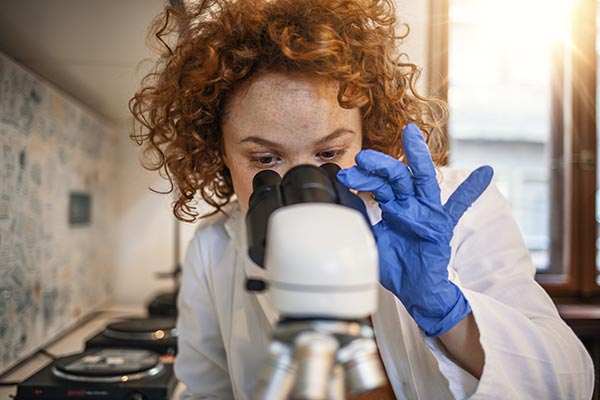Recent Posts
THE STORY OF MY WILSON DISEASE: AGE 8 TO 53
By Barbara Noci I was born on the 6th of April 1972 in Empoli, a little city near Florence in [...]
Travis’s Story of Wilson Disease
Rare and Rural By Rhonda Rowland, WDA President We all love a small town. Images come to mind of holiday [...]
Newborn Screening for Wilson Disease
A 25-year dream coming close to reality By Alice Williams, WDA Communications Director Since the 1960s, the United States has [...]
Can Copper be Absorbed Through the Skin?
By Edward Tabor, MD, WDA Board Member The main source of copper for humans is food, and Wilson disease patients [...]
They Said “Yes” to Gene Therapy
By Rhonda Rowland, WDA PresidentWe continue the story of two trailblazers who are among the first Wilson disease (WD) patients [...]
Meet the Inaugural Gene Therapy Candidates
By Rhonda Rowland, WDA President The two gene therapy clinical trials for Wilson disease (WD) launched by Ultragenyx and [...]
THE STORY OF MY WILSON DISEASE: AGE 8 TO 53
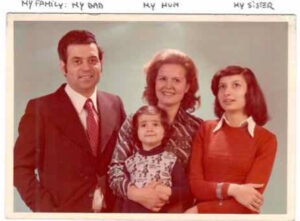 By Barbara Noci
By Barbara Noci
I was born on the 6th of April 1972 in Empoli, a little city near Florence in Tuscany, Italy where I still live. In the 1970s I was a lively girl: I used to ride my bike with friends after school returning home at sunset after riding, running, jumping and playing with my dog, a German shepherd. However, something happened in the summer 1980 when I was eight years old. I became more and more tired and exhausted. I didn’t want to play anymore and instead, preferred sitting next to my grandmothers who used to sit outside in the street or in a garden and talk. They usually offered me something to eat like bread or homemade cake, but I found that I was no longer interested in eating and I wasn’t hungry at all. This was really unusual because I liked eating!
My continued decline
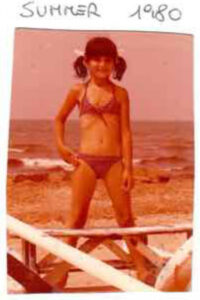 So, I stopped playing and I stopped eating. The only thing I wanted to do was lie down and sleep. My parents were getting more and more worried but when they asked me how I was feeling and if anything hurt, I answered that I was just tired and not hungry and everything was fine, nothing hurt. I had some bruises on my legs – which was quite normal for a girl who spent her time outside – and I sometimes had nose bleedings. My situation was worsening: that summer I stopped eating breakfast and started to throw up every morning even if I didn’t eat anything at all. I was getting really skinny and in one of the pictures I have at the seaside you can count my ribs!
So, I stopped playing and I stopped eating. The only thing I wanted to do was lie down and sleep. My parents were getting more and more worried but when they asked me how I was feeling and if anything hurt, I answered that I was just tired and not hungry and everything was fine, nothing hurt. I had some bruises on my legs – which was quite normal for a girl who spent her time outside – and I sometimes had nose bleedings. My situation was worsening: that summer I stopped eating breakfast and started to throw up every morning even if I didn’t eat anything at all. I was getting really skinny and in one of the pictures I have at the seaside you can count my ribs!
Getting medical help, but no answers
In September, my parents and I saw our general practitioner who immediately felt my enlarged liver and had me undergo some blood tests. My liver enzymes were really high, so I was admitted to the local hospital. They tested me for hepatitis but the markers were negative. I had the liver of and old drunkard and I was only eight years old! Doctors had no clue what was causing my liver problems, but one day I started bleeding massively from my nose. Perhaps doctors feared possible internal bleeding or liver failure, so I was admitted with urgency to the Meyer Pediatric Hospital in Florence. I should have had my liver transplanted, but I couldn’t have survived a surgery and my liver could fail at any minute. I don’t remember how many tests I went through, but it was a lot, though strangely enough I remember this long period of needles and tests as happy. I met nice kids, courageous parents and fantastic doctors. They laughed, they joked and they never gave up on me – particularly Dr. Pavari and later Dr. Resti.
Finally, a diagnosis
My health situation was getting worse and worse, so after three months my doctors called in a hepatologist who treats adults for a consultation: Dr. Gentilini. By chance, he had just come back from a conference in the USA where he had heard about Wilson disease (WD), so he suggested they check the copper with a 24 hour urine test and…bingo! I don’t remember how much copper they found, but it was way too much. My diagnosis couldn’t be confirmed by a liver biopsy since it was too dangerous due to possible bleeding. However, they found Kayser-Fleischer rings in my eyes, which slowly disappeared after I was put on penicillamine.
The start of my recovery and giving back
By the end of 1980 I was able to celebrate Christmas at home with my family. My health improved and I could slowly take my life back. I wasn’t fully aware of what I had just been through, but without immediately realizing it, this experience had made me strong, resilient, patient, willing to enjoy life. Growing up with a life-threatening disease, I have always had clear in my mind what really matters.
I had regular checks up at Meyer Pediatric Hospital for many years, and while I was their first WD patient, they’ve cared for others after me. I remember one day doctors asked my mum and me, if we could see a girl recently diagnosed with WD who was still at the hospital. Her parents were very worried and scared about her future and they thought that maybe meeting me could give them some hope for a normal life for their daughter. So my mum and I went to her room and it was the first time I was meeting another girl with WD. I still remember that looking at her, I could perfectly understand was she was going through, as she could understand me. It was the same feeling I would have many years later when I attended the first Italian Wilson Disease Meeting in Rome.
Discovering the Wilson Disease Association
I graduated from high school and graduated in foreign languages, French and English with honours, and started working at my dad’s company. He had a videogame company and we bought pinballs from the USA, videogames from Japan and I wrote faxes and made phone calls. The first time we got internet connection, can you guess what I searched for on the internet? Wilson disease of course! For the very first time I could find something: information about the disease, which on some sites was still described as always deadly, and I found the American Wilson Disease Association. I could chat with a lot of patients and families, I became a member and got regularly the “Copper Connection” newsletter.
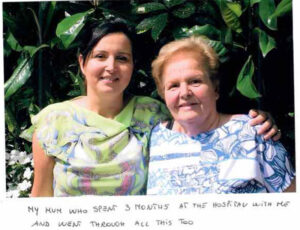 The transition from pediatric to adult care
The transition from pediatric to adult care
A few years earlier, I had had to leave Meyer Pediatric Hospital. Afterall, I was in my mid-twenties and not a child anymore, so I went to Careggi Hospital in Florence. It was a bit of a trauma, because for the first time, I had two liver biopsies. Doctors put me back on penicillamine; a few years earlier the pediatricians, who were concerned about long-term side effects from penicillamine, had put me on zinc sulfate, which was an over-the-counter treatment.
How I became a zinc study participant
I got married in 1998 and the next year, when I was pregnant with twins, the internal medicine department of Careggi Hospital where I had my check-ups, closed. I felt absolutely abandoned. I was scared that the penicillamine could harm my children, so I did something maybe reckless and risky in hindsight, but actually turned out to be the best thing I could have done. I had read in “The Copper Connection” newsletter that a doctor – Dr. Brewer from Michigan- was looking for WD patients who were pregnant to test a new drug, that might be less potentially harmful than penicillamine called zinc acetate. I had already been on zinc sulfate for a few years when I was at pediatric patient so I decided to contact Dr. Brewer and volunteer in the trial. Researchers at the University of Michigan shipped me zinc acetate for one year and I sent them my 24 hour urine tests in kits I received regularly from them.
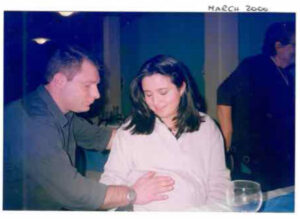 At the end of the clinical trial the zinc acetate was approved by the FDA as Galzin, and few years later by the European Union Drug Agency as Wilzin. I kept my last medicine bottle they sent me with the name of Dr. Brewer and the contacts at the University of Michigan on it, which I donated to Dr. Zuin who treated me in Milan, where I now have my check-ups twice a year. He collects WD medicine from all over the world.
At the end of the clinical trial the zinc acetate was approved by the FDA as Galzin, and few years later by the European Union Drug Agency as Wilzin. I kept my last medicine bottle they sent me with the name of Dr. Brewer and the contacts at the University of Michigan on it, which I donated to Dr. Zuin who treated me in Milan, where I now have my check-ups twice a year. He collects WD medicine from all over the world.
The rest of my story
In the spring of 2000, my twins were born healthy at 36 weeks through a caesarean section. My son graduated in Management Engineering last December and now works at an asset management company in Rome. My daughter is studying medicine and will graduate in July. I’m now 53, in good health, and still take Wilzin. I work as an English teacher at a high school in Empoli
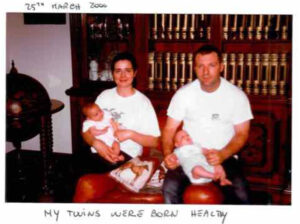 I wish my parents had been able to read a story about a 53-year-old woman with WD living a normal life, back in 1980 – when the future of their daughter seemed terribly uncertain and deeply scary. That’s why I hope my story can be a source of comfort and hope to parents who’ve just learned their children have WD: they can go on to live healthy, happy and normal lives.
I wish my parents had been able to read a story about a 53-year-old woman with WD living a normal life, back in 1980 – when the future of their daughter seemed terribly uncertain and deeply scary. That’s why I hope my story can be a source of comfort and hope to parents who’ve just learned their children have WD: they can go on to live healthy, happy and normal lives.





